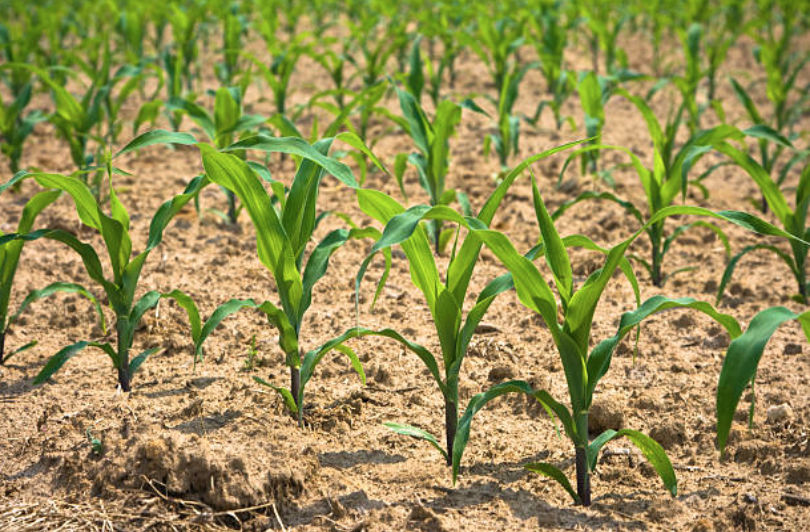Top Dressing. Ensure Your Corn Gets What It Needs

By Bruce Barker
Top dress. Side dress. Dribble band. Broadcast. Fall application. There are many ways to supply nitrogen (N) to corn during the growing season.
“Split application of nitrogen with an in-season application is a very good option, especially in a year like we just had when a lot of farmers didn’t get their nitrogen applied the previous fall,” says Soil Fertility Specialist, John Heard with Manitoba Agriculture and Resource Development at Carman, Manitoba.
Heard says that in a recent fertilizer use survey, 10 to 12 percent of Manitoba farmers apply N after planting, compared to 35 to 40 percent in Ontario, and virtually all mid-west US farmers where N losses can be high in-season.
The theory behind applying fertilizer in season is to have the right amount of nitrogen available for when the corn crop requires it. “It is important to check fertility throughout the year to ensure your corn has all the nutrients that are needed,” says Dieter Schwarz, Corn Product Line Manager with NorthStar Genetics. Split applications also help manage risk. For example, if all nitrogen is fall applied, in a wet year that nitrogen is susceptible to leaching. In a dry year, the plant may not require the full amount that was fall applied. In-season application allows growers to match nitrogen amounts with environmental conditions and yield potential.
“The research shows that split applications can’t be sold on the basis of yield in most situations. But it is a good option where pre-seed N applications weren’t completed, or in situations where high rainfall could result in N losses during the growing season. Those are where I would expect to see an advantage of in-season split applications,” says Heard.
Schwarz says farmers who are planning on side dressing N should start with a pre-sidedress nitrate soil test. He says a soil test will help guide timing and application rate. Lighter soils that are at risk of leaching could benefit from several in-crop N applications. Soils with greater storage capacity may only need one post-seeding application.
“The big thing is to minimize nitrogen losses and to avoid leaf burn or root damage. You don’t have to wait until V6. If side-banding with a coulter, going earlier means you can run the coulters closer to the seedrow. If you’re using a Y-drop to dribble band UAN, look at an urease inhibitor to help reduce volatilization losses,” says Schwarz.
Fertigation is another way to apply N in-season. Schwarz says irrigation farmers typically apply around 50 pounds N pre-plant, and then 20 to 30 pounds per acre per irrigation event – typically around 4 events depending on natural rainfall– for a total of 150 pounds in this example.
Another option to split N is by using a controlled release fertilizer in a soil application at or before seeding.
There are a lot of options for split application of nitrogen. Having said that, many Manitoba farmers have been comfortable applying all of their N in the fall as anhydrous ammonia or urea, followed up with planting into undisturbed ground in the spring.
It is important to understand and explore options. What is most important is to do what works best for your farm to ensure your corn crop gets what it needs.



